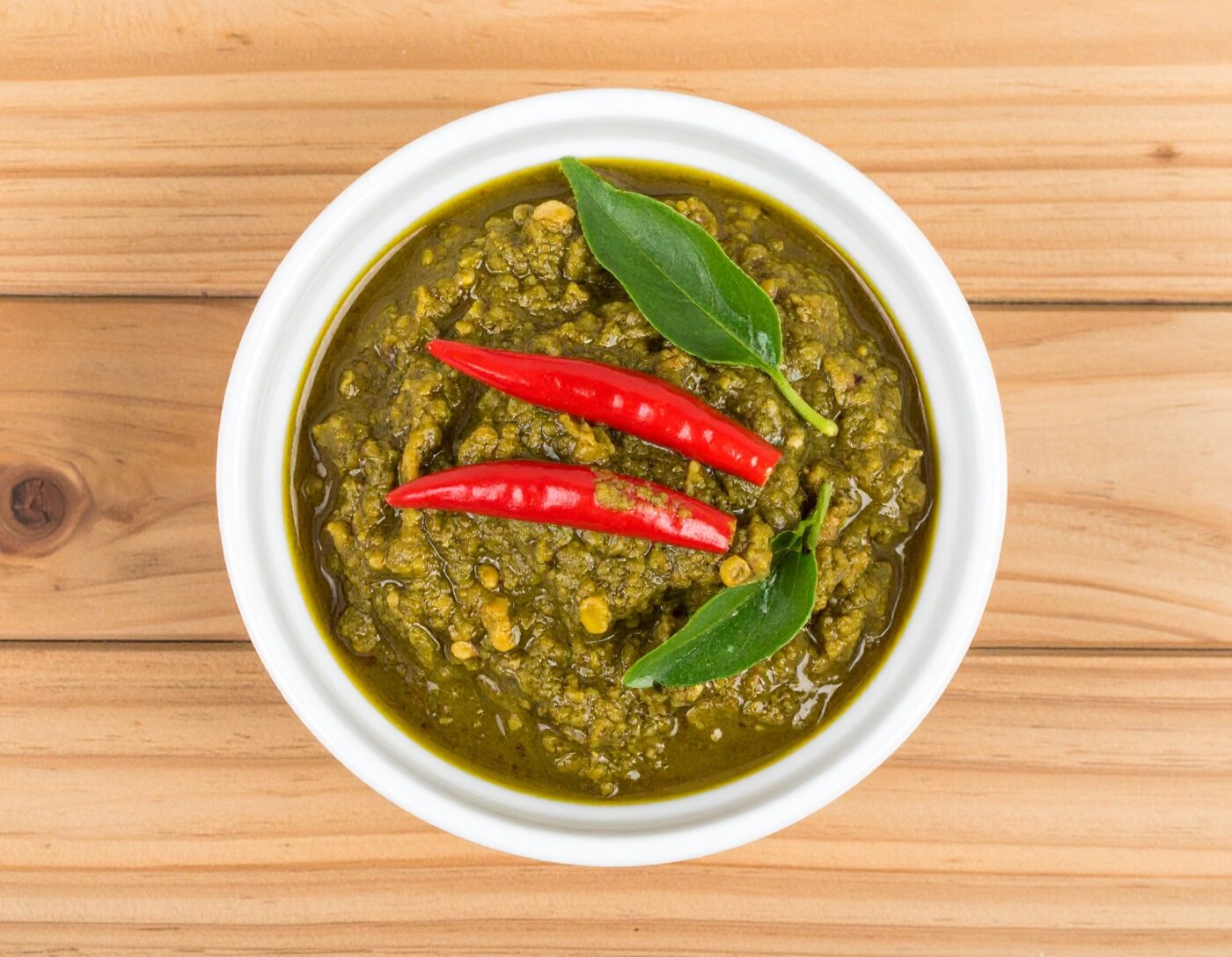Green Curry Paste
Green curry paste, with its vibrant emerald hue and intoxicating aroma, is a cornerstone of Thai cuisine. This complex blend of herbs, spices, and chilies ignites a symphony of flavors, ranging from herbal and citrusy to spicy and savory. Let's delve into the world of green curry paste and uncover its culinary magic.
Introduction to Green Curry Paste
Green curry paste is a harmonious blend of fresh ingredients that work together to create a multi-layered taste experience. Green chilies provide a fiery kick, while lemongrass, galangal, and kaffir lime leaves contribute a fragrant, citrusy aroma. Shallots, garlic, cilantro roots (or stems), and shrimp paste add savory depth, while spices like coriander and cumin round out the flavor profile.
Culinary Uses of Green Curry Paste
- Thai Green Curry: The most iconic use of green curry paste is, of course, in the beloved Thai green curry. Combined with coconut milk, vegetables, protein, and a touch of sweetness, it creates a creamy, flavorful, and aromatic dish.
- Stir-Fries: Green curry paste adds a vibrant burst of flavor to stir-fries, infusing vegetables, tofu, or meat with its fresh, herbal notes.
- Soups: A dollop of green curry paste can transform a simple broth into a fragrant and flavorful soup.
- Marinades: Green curry paste makes an excellent marinade for chicken, fish, or tofu, imparting a complex flavor profile and tenderizing the meat.
- Noodles & Rice Dishes: Add a spoonful of green curry paste to your favorite noodle or rice dish for a spicy and aromatic kick.
- Dipping Sauces: Mix green curry paste with coconut milk or yogurt for a unique and flavorful dip for vegetables or grilled meats.
Tips
- Start Small: Green curry paste can be quite spicy, so start with a small amount and adjust to your desired heat level.
- Bloom the Aromatics: Briefly fry the curry paste in oil before adding other ingredients to release its full flavor potential.
- Balance the Flavors: Green curry paste is a complex blend of sweet, salty, sour, and spicy flavors. Taste as you go and adjust seasonings accordingly.
- Storage: Store leftover green curry paste in an airtight container in the refrigerator for up to a week or freeze for longer storage.
- Fresh vs. Store-Bought: While homemade green curry paste offers the freshest flavor, store-bought options provide convenience. Choose a brand that uses high-quality ingredients.
A Brief History of Green Curry Paste
Green curry paste is deeply rooted in Thai culinary tradition, reflecting the country’s abundance of fresh herbs and spices. Its exact origins are unclear, but it has been a staple in Thai cuisine for centuries. Traditionally, curry paste was made by hand using a mortar and pestle, but today, it’s readily available in markets and grocery stores worldwide.
Nutritional Information on Green Curry Paste
- Green curry paste is relatively low in calories and fat, but it packs a punch of flavor.
- It’s a good source of vitamins and minerals, including vitamin A, vitamin C, and iron.
- Additionally, the herbs and spices in green curry paste have been linked to various health benefits, such as anti-inflammatory properties and improved digestion.

Green curry paste is a culinary treasure, offering a gateway to the vibrant and diverse flavors of Thai cuisine. Its versatility, freshness, and vibrant aroma make it an essential ingredient for any adventurous cook.
Disclaimer
- General Information Content on this page above, including the content provided on www.CookingHub.com, including all recipes, articles, and other materials, is for general informational purposes only. This content reflects the personal opinions and experiences of its authors and is not intended to provide professional dietary, medical, legal, or political advice. Please consult a qualified professional before making any decisions based on the information presented here.
- Content Ownership and Use Content on this page above, including content published on CookingHub.com is owned by the individual authors who created it. Only the authors can access, modify, or delete their content from the platform. Our content may be embedded on third-party websites and blogs without modification. No reimbursement will be provided for this use. If an author removes content from CookingHub.com, it will no longer be available through any embedded links.
- Limitation of Liability Neither www.CookingHub.com (operated by the CookingHub Foundation) nor content authors are responsible for any outcome or consequence resulting from the use of information on this site. This includes, but is not limited to:
- Food Safety: Any health risk related to food handling, food quality, or failure to follow USDA recommendations (including minimum safe cooking temperatures).
- Preparation Safety: The proper and safe handling of cooking equipment or its suitability for any given task.
- Recipe Outcomes: The final look, taste, or success of following a recipe.
- Ingredients and Equipment: The sourcing of ingredients, tools, equipment, or anything else related to the preparation and consumption of food.
- Nutritional and Dietary Information: The accuracy of nutritional data. This information is provided as a courtesy and should not replace advice from a medical provider. You are responsible for verifying that a diet is suitable for your personal health needs.
- Errors and Omissions: Any potential errors, typos, or unclear directions in articles and recipes.
- User Responsibility All readers, visitors, and users of embedded content are solely responsible for evaluating recipes and articles. You must make your own decisions about whether to follow the steps and recommendations provided. It is your responsibility to ensure that ingredients and preparation methods are safe and appropriate for your personal dietary restrictions and health conditions.
Comments